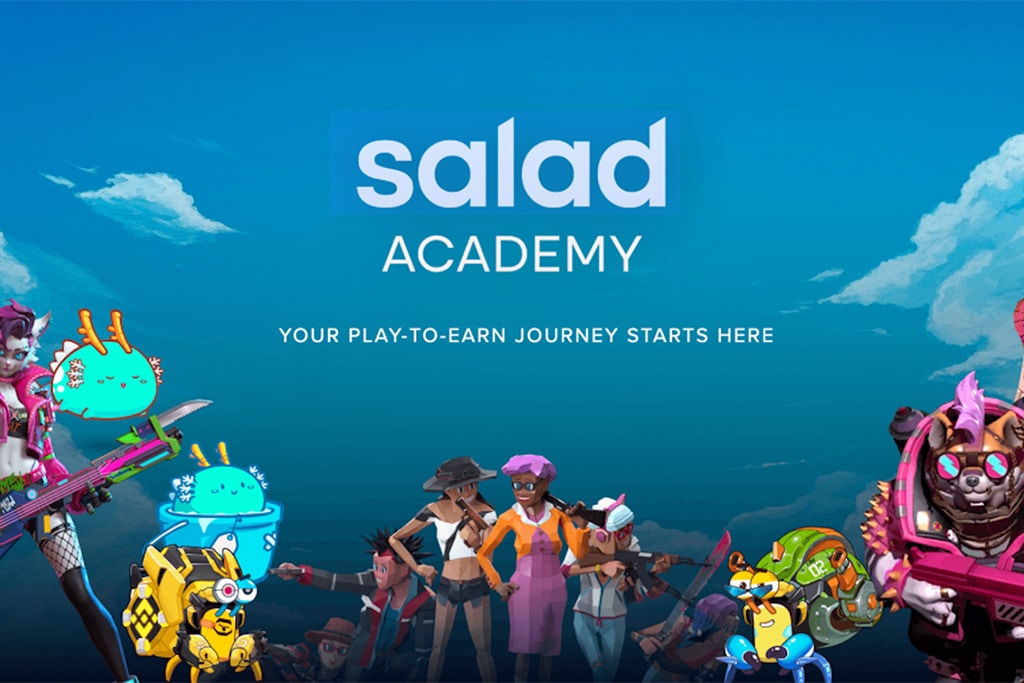
Please check out latest news, expert comments and industry insights from Coinspeaker's contributors.
In addition to building infrastructure that connects multi-chain guild management under one roof, Salad Ventures will direct some of its recently-raised seed funds to a massive open online course (MOOC) platform.

By the end of 2021, the explosion of gamefi had been such that nearly half of all defi wallets created on a monthly basis were being used in the blockchain gaming space. Dozens of new blockchain-based games continue to emerge each month as developers attempt to capitalize on a trend that has arguably brought more eyes to the cryptocurrency space than ever before.
The plethora of new releases is an example of the growth rate in the industry at large, but while gamefi grows, it is also being refined.
Recently, a new operating system for blockchain games attracted $13.5 million in private seed funding from Polygon Studios, Winklevoss Capital, Rarestone Capital, and others. The concept? A gamefi-centric guild management system.
GuildOS is a platform that grants users a direct window into the management of guilds and NFTs from a single dashboard. Gamers can manage guild scholar accounts, wallets and private keys from multiple blockchain games using GuildOS while in-game activities such as cloning and breeding NFTs can be carried out directly.
This idea builds upon the current iterations of guild-management, where the data related to in-game NFTs is presented in a ‘read-only’ form, as is the case with popular titles like Axie Infinity. The GuildOS dashboard lets players interact directly with blockchains and game APIs, meaning guild management can be coordinated across disparate networks.
Felix Sim, Co-founder of GuildOS developer Salad Ventures, said:
“Despite the fact that a deep ecosystem has developed over the last 12 months, most play-to-earn game tools are focused solely on Axie Infinity and provide ‘read-only’ dashboards, therefore failing to solve the real challenges related to operating a P2E guild.”
In January 2022, the overall number of active gamefi participants peaked at just over 1.1 billion, and trade volume in excess of $100 million continues to be recorded on a daily basis according to data from DappRadar.
Just as the broader cryptocurrency space pivoted from exclusivity towards interoperability, the same dynamic is starting to appear in the gamefi sector. While blockchains once sought to define themselves in opposition to rival chains, developers have come to realise that end users have no intention of confining their activities to a single network.
Following a concerted effort on the part of developers to expand the blockchain space horizontally, users (gamers, traders) now have the ability to transfer coins and tokens across different chains via bridges, interacting with potentially dozens of defi applications (dApp) simultaneously.
Gamefi developers are now following suit, with NFT launches on multiple platforms having become commonplace. The long-term goal for many budding projects, meanwhile, is to make NFTs from one game compatible with those of another. In any event, this push for interoperability is enormously beneficial for would-be gamers, who get to jump from gameworld to gameworld as they see fit.
In addition to building infrastructure that connects multi-chain guild management under one roof, Salad Ventures will direct some of its recently-raised seed funds to a massive open online course (MOOC) platform. Dubbed Salad Academy, the platform will offer educational content related to blockchain games and teach P2E gaming strategies. Since launching late last year, over 6,000 students have signed up.
“For gamefi to succeed, robust infrastructure is essential,” notes Brian Lee, a Partner at leading investor Alameda Research. “GuildOS will be a critical component to supporting the rapidly-growing ecosystem of games, guilds and players in Web 3.0.”
Disclaimer: Coinspeaker is committed to providing unbiased and transparent reporting. This article aims to deliver accurate and timely information but should not be taken as financial or investment advice. Since market conditions can change rapidly, we encourage you to verify information on your own and consult with a professional before making any decisions based on this content.

Please check out latest news, expert comments and industry insights from Coinspeaker's contributors.